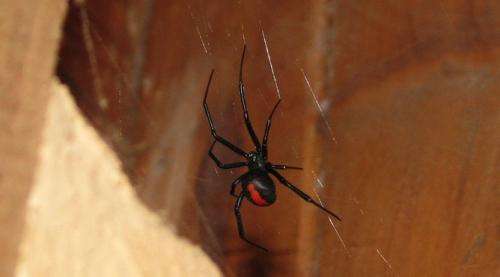Is redback spider antivenom effective?

Media reports about the redback spider antivenom being ineffective caused a bit of a stir recently. The articles were based on research presented at a major toxinology conference in Dubai.
To understand how and why this could be and whether you should be worried, you will need some information about venoms and how antivenoms are made first.
Venoms are not only produced by snakes and spiders, but also by bees, scorpions, ants, fish, shellfish, the male platypus and other creatures. They're used for a variety of functions including the immobilisation of prey, digestion and defence, and are a complex mixture of biologically active molecules.
Antivenoms work by binding to components of venom and neutralising them, and were first made to combat snake bites because they often have fatal consequences.
We now have antivenoms to combat bites and stings by snakes, spiders, jellyfish and other creatures, especially for those that may be fatal or debilitating.
Venoms from different species of snake are usually different mixtures of toxic components and venoms from spiders are different again, so we need to make different antivenoms for each one.
How antivenoms are made and tested
Antivenoms used in Australia are usually made by injecting small, sub-lethal doses of venom into horses. The immune systems of these horses then produce antibodies against components of the venoms.
A small amount of blood containing these antibodies is taken from the horse (the horse easily replaces this blood, just like when you donate blood), and the antibodies are separated from it.
The antibodies are then processed to make them more effective at binding to venom components, and less likely to produce allergic responses in the treated bitten person.
It's thought the antivenom for one snake species may also be effective in neutralising venoms from other, unrelated species. This may be due to the fact that horses are used to produce antivenoms against different types of snakes at different times and may retain antibodies from previous immunisations for some period of time.
Testing antivenom is problematic.
There are ethical issues with gathering the highest level of evidence – double-blind, placebo controlled studies in which people are injected with venom, and some are treated with antivenom but others are not.
So, most of the antivenoms we currently use have been tested using animals. And there are extensive studies of instances where antivenoms have been used in people.
It's also possible to do venom-antivenom binding studies in the laboratory. Antivenoms, you will recall, work by binding to and neutralising certain toxic components found in venoms.
Ideally, an antivenom neutralises the lethal components of the venom. But antivenoms don't necessarily bind to all components of the venom, so not all its effects may be neutralised.
What's more, as they are remnants of molecules made by a horse, antivenoms may result in severe allergic reactions in people. So, while antivenoms can save lives, they can cause problems in their own right as well.
Redback antivenom
Redback spider bites are not usually fatal in adults but tend to be more dangerous in children as the spider doesn't necessarily inject a smaller amount of venom into a smaller person.
Redback spider antivenom is made by the pharmaceutical company CSL, which makes most antivenoms used in Australia. The company claims its antivenom is effective against all black widow spiders (the family of spiders to which the redback belongs), as well as some others.
But what of the news that this is not so?
The research the reports were based on was done by Geoff Isbister, a toxinologist at Newcastle's Calvary Mater Hospital. He treated redback bite victims with analgesic drugs, but only gave half of them redback antivenom; the other half got a placebo.
Compared with the placebo group, the antivenom had very little effect, but it caused allergic reactions in 4% of those receiving it (remember the risk of this comes from the fact that we're using antibodies made by horses as the basis of the antivenom).
Based on this, Isbister says the treatment of redback spider bites should be re-evaluated. But other toxinologists quoted in the news reports highlighted that past studies have indicated the antivenom was effective.
Where does this leave the concerned reader with a shed full of redback spiders?
Well, the best thing you can do for now is avoid getting bitten. Being careful where you put you hands and if you can't see where you are putting them, wear gloves.
If you do get bitten, seek medical advice quickly, preferably at hospital as that's where the antivenom is likely to be.
Meanwhile, the continual challenging of current knowledge is good science.
Source: The Conversation
This story is published courtesy of The Conversation (under Creative Commons-Attribution/No derivatives).
![]()


















